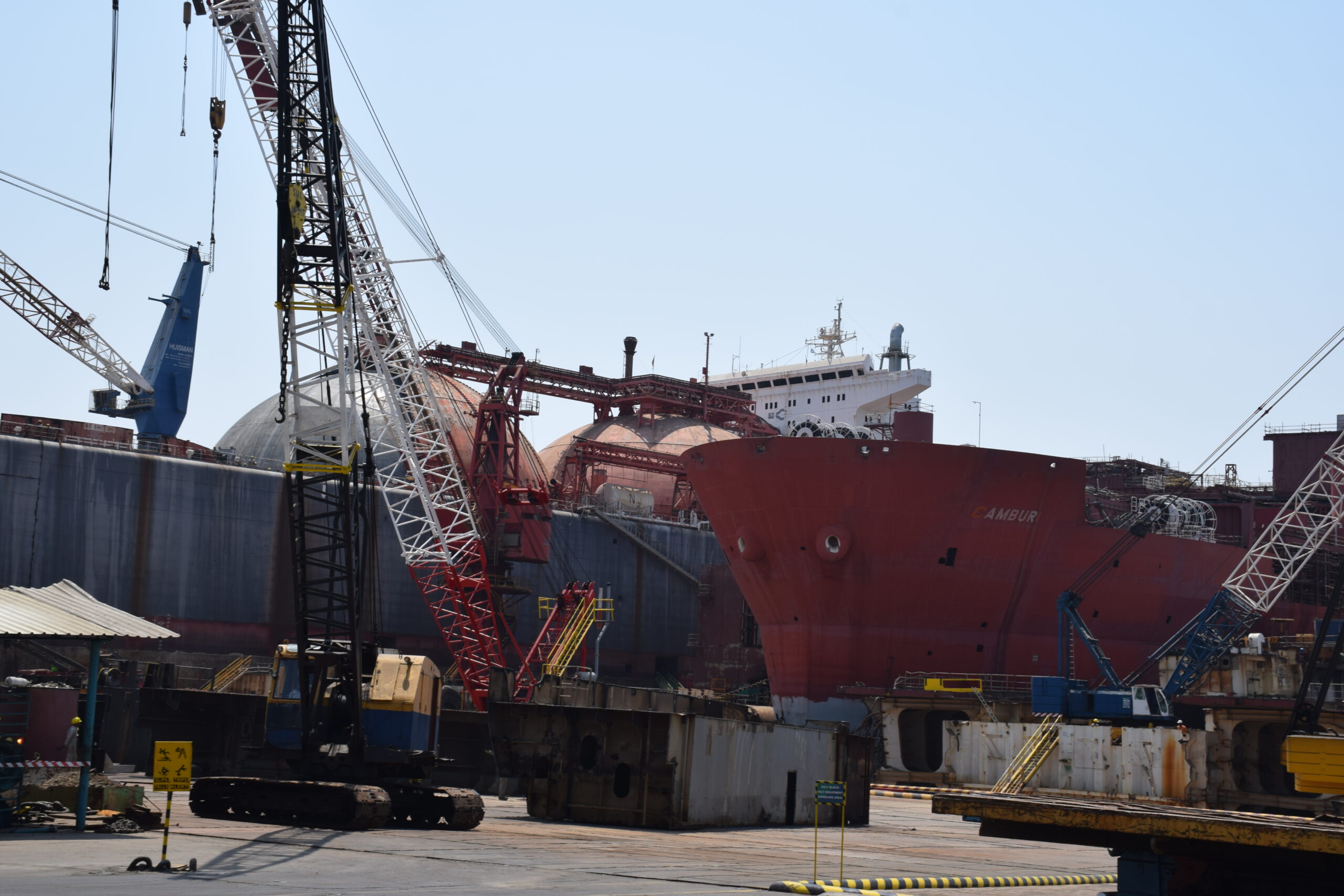Suez Canal Resilience: Tugs and Tactics Restore Order After ONE Orpheus Mishap

The Suez Canal Authority recently faced a challenging situation when an Ocean Network Express (ONE) containership, named ONE Orpheus, collided with a bridge, disrupting the northbound convoy. Despite efforts to divert the ships to the western channel, at least six vessels were affected by the incident. The vessel, with a deadweight tonnage (dwt) of 104,525, was built in 2008 and managed by NYK for ONE. It embarked on its journey from Japan and Singapore, heading to Rotterdam, Netherlands.
Early in the morning, during its transit through the canal, the ONE Orpheus encountered a steering failure due to a rudder breakdown, leading to the collision with a floating bridge near mile marker 74. The ship, measuring 336 meters (1,102 feet) in length and boasting a capacity of 9,040 TEU, was pictured askew in the canal, with its bow cutting through the floating bridge. The incident occurred north of Great Bitter Lake in an area with two channels.
ALSO READ : EU Nears Approval for Sustainable Ship Recycling in Alang India
AIS signals indicated that an MSC containership was holding behind the disabled ONE vessel, along with tankers, LNG, and LPG carriers in the convoy. Upon being notified of the incident, the canal authority directed the northbound convoy vessels to moor and drop anchor. Subsequently, four tugs were dispatched to assist the disabled containership. After several hours of delay, the tugs successfully repositioned the ONE Orpheus into the channel. Following confirmation of its seaworthiness, the journey north resumed with a tug escort, allowing the six vessels behind to continue their voyage.
The southbound convoy was unaffected, given the incident’s location with two available channels. The initial plan was to divert the northbound traffic after the southbound convoy passed the affected area. By midnight local time, the ONE Orpheus cleared the northern terminus of the Suez Canal and was moved to the anchorage off Port Said. AIS signals at 2:30 a.m. indicated that the last of the northbound convoy was approaching Port Said.
ALSO READ : EU Breakthrough: Opening Doors for Global Ship Recycling Expansion
This incident occurred amidst a period of increased pressure on the Suez Canal, experiencing record volumes and heightened concerns due to vessels diverting from the Panama Canal and security issues in the Red Sea. In November, the Suez Canal Authority reported record-breaking numbers in terms of vessels and tonnage passing through the canal.
The accident was north of Great Bitter Lake and in an area where there are two channels. However, AIS signals show an MSC containership holding behind the disabled ONE vessel as well as tankers, LNG, and LPG carriers that were also in the convoy. The canal authority reported after being advised of the incident they ordered vessels in the northbound convoy to moor and drop anchor while four tugs have been dispatched to assist the disabled containership.
After a several-hour delay, the tugs were able to reposition the ONE Orpheus into the channel and after confirming its seaworthiness the trip resumed to the north with a tug escort. The six vessels directly behind the disabled vessel were also able to resume their voyage. The southbound convoy was able to proceed because the incident happened in an area where there are two channels. The plan had been to divert the northbound traffic after the southbound convoy had passed the area.
Comparing traffic to the previous year, ship movement in the Suez Canal was up by over four percent in November, totaling 2,264 ships compared to 2,171 ships in November 2022—an increase of 93 vessels. Net tonnage also rose by over eight percent, reaching 135.5 million tons, compared to 125.2 million tons in the same period the previous year.
The incident with the ONE Orpheus highlights the challenges faced by the Suez Canal Authority in managing the surge in maritime traffic. Despite the disruption caused by the collision, the canal authority’s prompt response, utilizing tugs to reposition the vessel and ensuring its seaworthiness, allowed for the resumption of the convoy’s northbound journey. As the Suez Canal continues to be a crucial maritime route, incidents like these underscore the importance of effective management and infrastructure maintenance to ensure the smooth flow of global trade.
Author: shipping inbox
shipping and maritime related web portal








